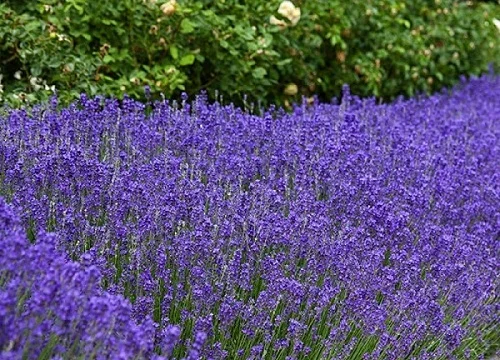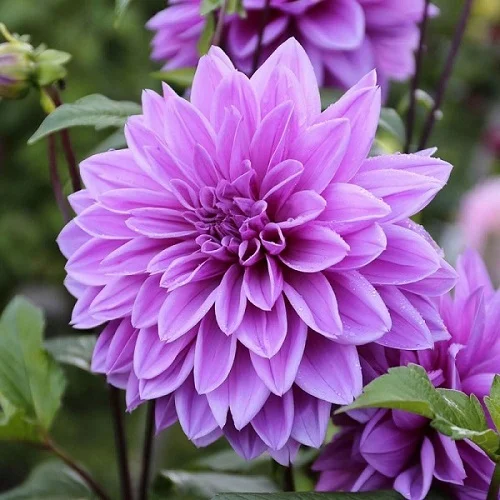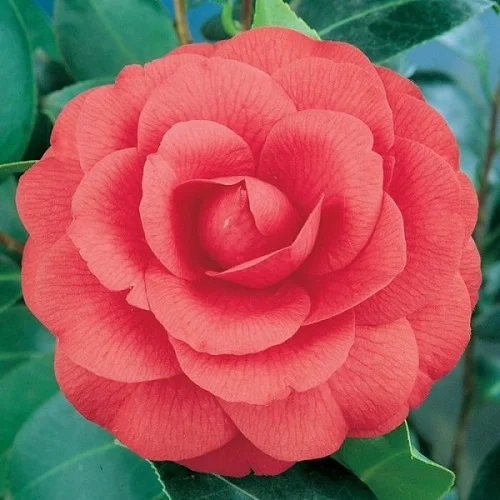How to Grow and Care for Black-eyed Susan (Rudbeckia hirta)
Some links in this post may be affiliate links
Rudbeckia hirta commonly called Black-eyed Susan is a fast growing, upright plant with alternate leaves covered with coarse hairs and daisy-like composite flower heads.
The species name, 'hirta', is Latin for 'hairy' in reference to the trichomes present on the leaves and stems The genus name, 'Rudbeckia', was given by Carolus Linnaeus to honor his patron and fellow botanist at Uppsala University, Olof Rudbeck junior, as well as Rudbeck's late father Olof Rudbeck senior, a distinguished Naturalist, Philologist, and Doctor of Medicine and founder of Sweden's first botanic garden.
Black-eyed Susan belongs to the Asteraceae (Daisy) family formerly Compositae family together with Purple Coneflower (Echinacea purpurea), Sunflower, Aster, Dahlias and Daisy.
Rudbeckia hirta was declared the state flower of Maryland in 1918. Black-eyed Susan symbolizes justice, encouragement and motivation to stay on the path of well-being.
Yellow Daisy is a self-seeding, perennial plant which is hardy to USDA Zones 3-9. This implies that it doesnot require much overwintering care in these zones but it benefits from cutting back of the stems in fall and covering the plant with a thick layer of mulch to keep the soil warm.
Being self-seeders, Black-eyed Susan may become overcrowded. Therefore, remove the extra plants to enhance air circulation to prevent fungal disease infestations.

Botanical name: Rudbeckia hirta
Family: Asteraceae
Common names: Black-eyed Susan, Yellow Daisy, English Bull's Eye, Brown-eyed Susan, Brown Betty, Golden Jerusalem, Gloriosa Daisy, Ox-eye Daisy
Origin
Black-eyed Susan is native to Eastern and Central North America.
Size
Black-eyed Susan size ranges from 1-3 feet high and 1-2 feet wide. The plants take about 2-3 years to reach this size.
Flowers
The inflorescence in Black-eyed Susan is a composite flower comprising of a compact arrangement of brightly-colored ray florets circling a dark-brown to black dome-shaped cone of small disk florets. It blooms from summer through fall. The flowers are about 4 inches wide and come in bright yellow to orange-gold, bronze, mahogany and flushes of red.
Cultivars
Common cultivars of Rudbeckia hirta include Indian Summer, Toto Rustic, Double Gold, Becky, Marmalade, Maya and Cherry Brandy.
Medicinal Uses
Infusions of Black-eyed Susan have been used to treat colds, flus, dropsy and worms in children. They have also been used to treat sores, earaches and snake bites.
Black-eyed Susan Care
Black-eyed Susan thrives in full sun with at least 6-8 hours of sunshine per day, warm and dry conditions and moderately moist, well-drained soil with occasional feeding to promote a lush growth. It requires proper grooming to keep the plant neat, to control growth and to minimize pest and disease infestations as it improves aeration.
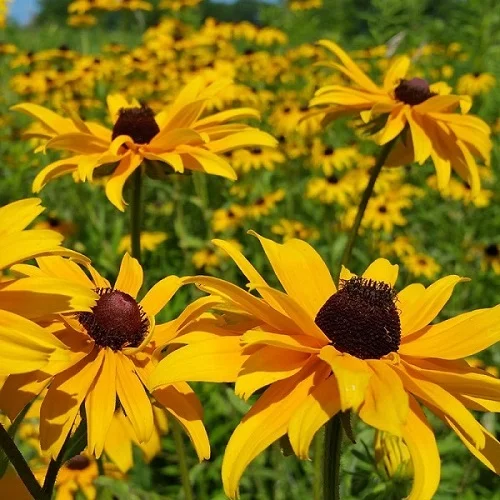
Light Requirements
Black-eyed Susan requires full sun with at least 6-8 hours of sunshine per day through out the growing season to encourage flowering. It can tolerate some shade but too much shade will reduce blooms and it may also encourage powdery mildew infestations.
Water Requirements
In the early stages of development, water the young Black-eyed Susan regularly to maintain the soil moist until the plants are well established. Once established, they are fairly drought-tolerant and will not require very frequent watering.
Water the established plants moderately during the growing season while allowing the soil dry out between waterings. Avoid wetting the foliage during watering by watering at the soil level to prevent powdery mildew disease.
Temperature and Humidity
Black-eyed Susans grow best in warm temperatures with a minimum of 160C (600F). It can tolerate some humidity with good air circulation but too much humidity can lead to fungal diseases like powdery mildew.
Soil
The best soil for Black-eyed Susan should be any well-drained soil to prevent it from holding excess water and becoming soggy (saturated). It grows best in soils at a PH btween 6.8.
If the PH is not within the recommended range, it should be ammended. To increase PH (if it is too acidic), add lime to the soil. To decrease PH (if it is too alkaline), add soil sulphur. Allow a 2 weeks period for the soil to correct the PH.
If the soil is clay add some sand and manure to the soil to enhance drainage and if the soil is sandy, add manure to encourage water retention.
Fertilizer
Black-eyed Susan doesnot require too much feeding. A handful of manure incorporated in the planting hole at planting time should be adequate for these plants. However, to boost blooming, a phosphourous-rich, fertilizer applied during the growing season may be necessary.
Where to Buy Black-eyed Susans
Black-eyed Susan seeds are available online on Etsy (Link to Etsy).
Starting Black-eyed Susan Seeds
The Black-eyed Susan seeds can be started indoors to give them a boost or planted directly in the field in spring or summer.
Indoors: Start the seeds at least 10 weeks before the last frost.
Sow the seeds about 1/4 inch deep in damp seed starting mix and place the set up in a warm place or on a heating mat.
Germination should occur in 1-3 weeks. Transplant the seedlings outdoors when the danger of frost has passed and the soil has warmed up enough.
Outdoors / Field: After the threat of frost has passed, scatter the seeds gently on the soil and press them into the soil or cover lightly with the soil.
Keep the soil moist until the plants are well established after which you can reduce watering as the plants can tolerate dry conditions very well.
To avoid overcrowding which can result in fungal diseases infestations, thin the plants to 18-30 cm apart.
Planting Black-eyed Susan in the Ground
Dig up the soil to a depth of about 12-18 inches to loosen it and get rid of all the weeds and other debris from the soil.
Prepare planting holes twice as wide as the rootballs at a spacing of 18-30 cm. Incorporate a handful of fully decomposed organic manure per hole.
Plant the Black-eyed Susans at the same depth as they were in their pot. Firm the soil around the root ball lightly.
Thoroughly water the plants and maintain the soil moist until the plants are well established. Thereafter, water moderately while allowing the soil to dry out between waterings.
How to Promote Blooming in Black-eyed Susan
Keep the soil moderately moist through out the growing season. Do not allow the soil to become saturated or too dry out completely. Apply a mulch to retain moisture.
Ensure that the Black-eyed Susan receives full sunlight for 6-8 hours daily. However, keep the plants away from intense sunlight.
Feed Black-eyed Susan with a phosphourous-rich, fertilizer during the growing season to promote flower production.
Pruning Black-eyed Susan
Pruning Black-eyed Susan involves cutting back the stems to ground level once flowering is over to overwinter the plants. Cutting back promotes new growth from which the flower buds emerge.
Remove spent flower by pinching off the flower stalks at the base to prolong the flowering period.
However, for reseeding purposes, allow some flowerheads to go to seed. This will also provide food for the birds in addition to having Black-eyed Susans growing in different locations in your garden.
Overwintering Black-eyed Susan
Overwintering Black-eyed Susan is easy. Cut back of the stems in fall after flowering and cover the plants with a thick layer of mulch to keep the soil warm.
Propagation
Black-eyed Susan (Rudbeckia hirta) can be propagated by plant division at the beginning of the growing season (spring) or in fall after flowering.
How to propagate Black-eyed Susan by Plant Division
Carefully dig up the plants and split the clumps into several sections while ensuring that each section has adequate roots to hasten establishment.
Plant these sections in individual holes at the same depth that they were previously to avoid rotting and death of the plant.
Water the new plants thoroughly and maintain the soil moist through out until they are well-established after which you can begin routine care.
Uses of Black-eyed Susan
Black-eyed Susan can be planted in borders, containers, flowerbeds and wildflower gardens. The large, vibrant flowers can also be used as a cutflowers.
Companion Plants
Some of the best companion plants for Black-eyed Susan include Salvia, Verbena, Russian Sage, Agastache among others.
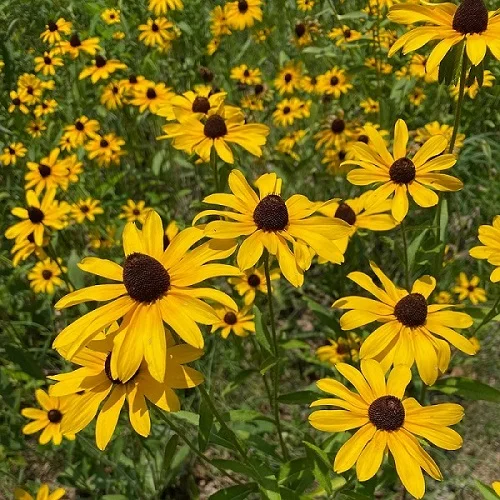
Black-eyed Susan Problems
Black-eyed Susan (Rudbeckia hirta) is a hardy plant that is rarely attacked by diseases and pests. However, powdery mildew may be a problem in warm humid conditions.
Powdery mildew is characterized by white or gray powder-like substance on the leaves and the stems. It is prevalent in damp, poorly ventilated conditions. Avoid overwatering and ensure that the soil is well-drained. Do not wet the foliage during watering and make sure that there is good air circulation.
Pests
Common pests in Black-eyed Susan are aphids, leafhoppers, leaf miners, vine weevils and Japanese Bettles. Spray the plant with an insecticidal soap or neem oil as recommended by the manufacturers.
You liked it? Share on social media.
Related Content
Amazon Associates Disclosure
Homeplantsguide.com is a participant in the Amazon Services LLC Associates Program, an affiliate advertising program designed to provide a means for sites to earn advertising fees by advertising and linking to amazon.com.
